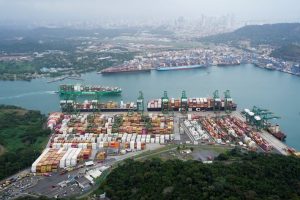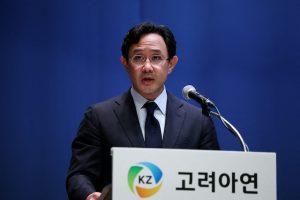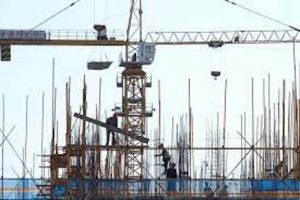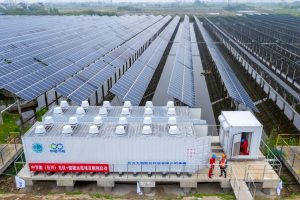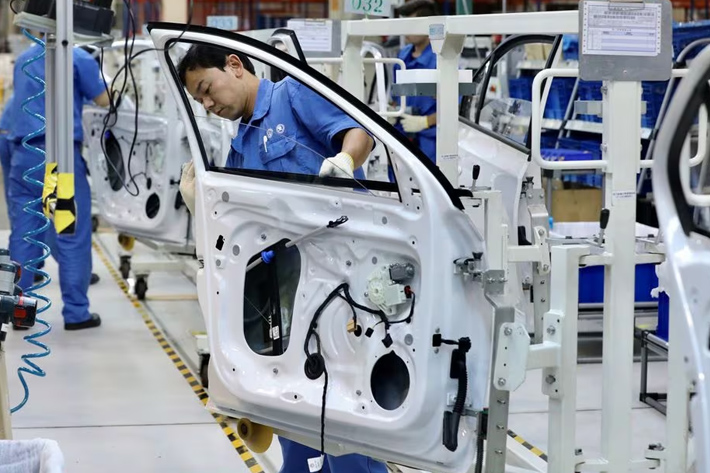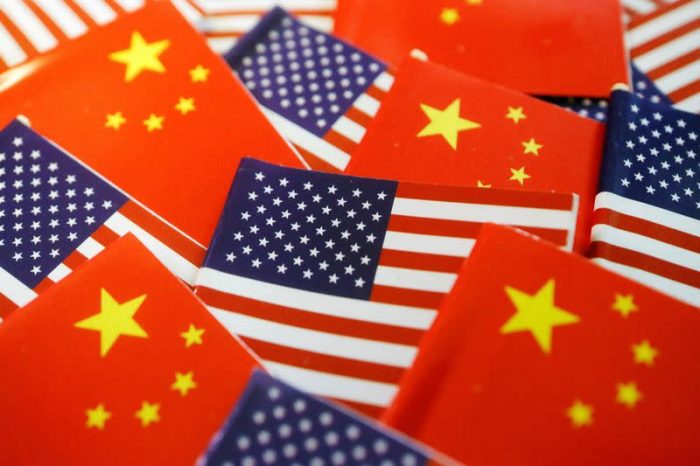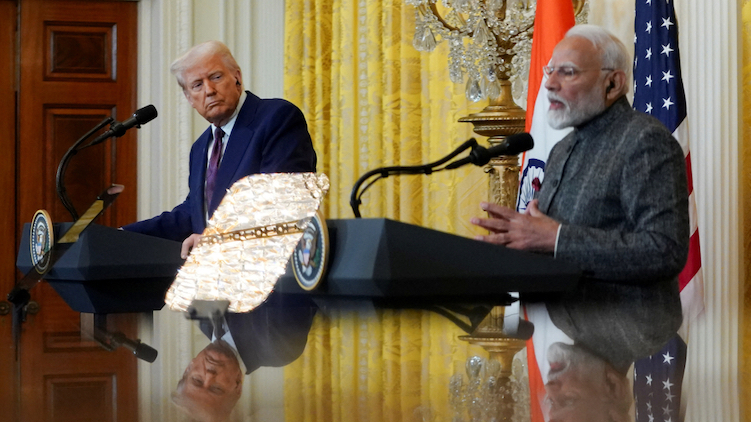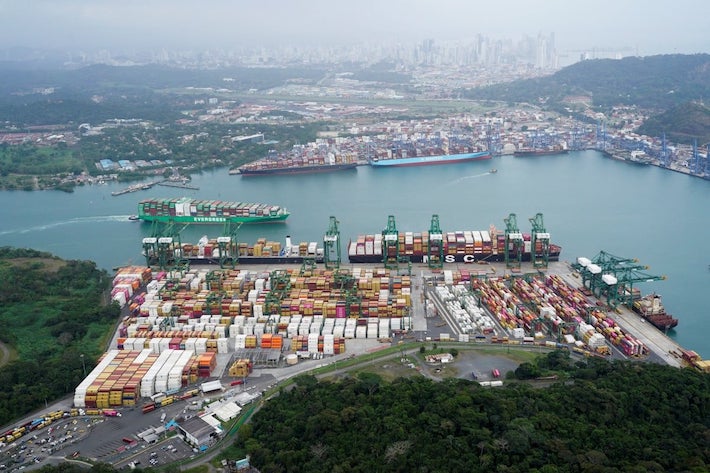Financial policymakers in China announced measures to stimulate the economy on Wednesday in a bid to reduce damage caused by tariffs announced by the United States last month.
The announcement of rate cuts and a major liquidity injection came shortly after US and Chinese officials said representatives of the two countries will meet in Switzerland this weekend.
Treasury Secretary Scott Bessent and chief trade negotiator Jamieson Greer will meet China’s top economic official He Lifeng for trade talks.
ALSO SEE: Carbon Credit Scheme Targets Coal Plants For Early Retirement
The talks are the first opportunity for the two sides to de-escalate tensions after a protracted cat-and-mouse game over tariffs in which neither wanted to be seen as backing down. The tensions have roiled global markets and upended supply chains.
The Chinese economy is already feeling the pain from the triple-digit levies, with data last week showing factory activity contracting in April at the fastest pace in 16 months. Concerns have been rising over the impact the tariffs would have on the job market and on the already-strong deflationary pressures in China as exporters lose their biggest customer.
“The domestic economy must be strong enough before (China) kicks off any protracted trade negotiations,” Xing Zhaopeng, senior China strategist at ANZ, said of Wednesday’s stimulus measures.
Chinese stocks rose as investors cheered the easing steps and the ice-breaker trade talks.
Citi analysts said in a note that “the tariff impact had started to surface,” and the stimulus measures could be “tactical” ahead of the trade talks.
“Timely domestic support could create more leverage for China,” they said.
Cuts to benchmark rate, reserves ratio
China’s central bank will lower the borrowing cost of its seven-day reverse repurchase agreements, its benchmark interest rate, by 10 basis points (bps) to 1.40%, effective from Friday May 8. Other interest rates will drop in line with the key rate.
The amount of cash that banks must hold as reserves, known as the reserve requirement ratio (RRR), will also be cut by 50 bps from May 15, bringing the average level to 6.2%.
The People’s Bank of China’s (PBOC) Governor Pan Gongsheng told a press conference the first RRR cut since September last year will release 1 trillion yuan ($138 billion) in liquidity.
At the same event, the chairman of the China Securities Regulatory Commission, Wu Qing, said authorities will help A-share listed companies affected by tariffs to cope with difficulties.
Mortgage cuts, stock market boost
Li Yunze, head of the National Financial Regulatory Administration, said Beijing will expand a pilot scheme allowing insurance companies to invest in stock markets by an additional 60 billion yuan ($8.31 billion).
Additionally, PBOC’s Pan said the central bank will set up low-cost re-lending facilities for purchases of tech-related bonds, and for investments in elderly care and services consumption. Similar existing tools to support agriculture and small businesses will be enhanced, Pan said.
The PBOC is also trimming mortgage costs for some buyers.
Policymakers have been flagging monetary policy easing moves since late 2024, but had held fire while the yuan currency was under pressure, fearing capital outflows, analysts said.
A slightly stronger yuan in recent days may have given the central bank an opening.
“A weaker dollar certainly gives China more room to make monetary adjustments,” said Xu Tianchen, senior economist at the Economist Intelligence Unit.
“I don’t have very high expectations of the credit impact of these measures,” said Xu, but added they “inject renewed confidence, which will support the stock market.”
Capital Economics analysts also said the economic impact of the monetary stimulus “will be positive but modest” because the main constraint on credit is demand, not supply. Fiscal support would be more effective, they said.
‘Bolder moves needed’
Analysts at Nomura – Ting Lu, Jing Wang, Harrington Zhang, Hannah Liu – said they did not believe the latest measures were “sufficient to address the double whammy” that the Chinese economy faces, from US tariffs and its property sector crisis. They also thought that trade talks aimed at cutting US tariffs could “take a lot of effort and time.”
“A slump in exports appears inevitable, while the property sector is still declining at a worrying pace. To cope with these unprecedented challenges, we believe Beijing needs to take bolder moves, especially on the fiscal front,” they said in a note on Wednesday.
“The simultaneous property fallout and the US/China decoupling are damaging and structural, requiring policies beyond short-term stimulus. Focusing merely on the size and timing of fiscal stimulus misses the big picture.”
Reductions on broader tariffs to be discussed
Washington and Beijing are expected to discuss over the weekend reductions of the broader tariffs, two sources familiar with the planning told Reuters.
The negotiating teams are also expected to discuss eliminating duties on specific products, US policies on the closing of the de minimis trade loophole and the US export control list, one of the sources said.
Beijing has largely kept up its fiery rhetoric as tensions soared over the past few weeks, having vowed to “never kneel” to US President Donald Trump’s tariffs.
The stimulus measures announced on Wednesday are “preventive in nature, as the US-China trade negotiations may take quite a long time,” Ma Hong, senior analyst at GDDCE Research Institution, said.
- Reuters with additional input and editing by Jim Pollard
ALSO SEE:
Asian Currencies Soar as Investors Dump The US Dollar
Japan Tells US: No Trade Deal Unless Auto Tariffs Reviewed
Foreign Retailers Give up on US as Tax on Small Parcels Starts
China Says It’s Assessing Possible Trade Talks With The US
Shipping Volume Will Plunge by Over a Third Next Week: LA Port
China Unveils Propaganda Video, Vows to ‘Never Kneel’ to Bullies
China’s Factory Activity Falls as US Tariffs Kill Export Orders





